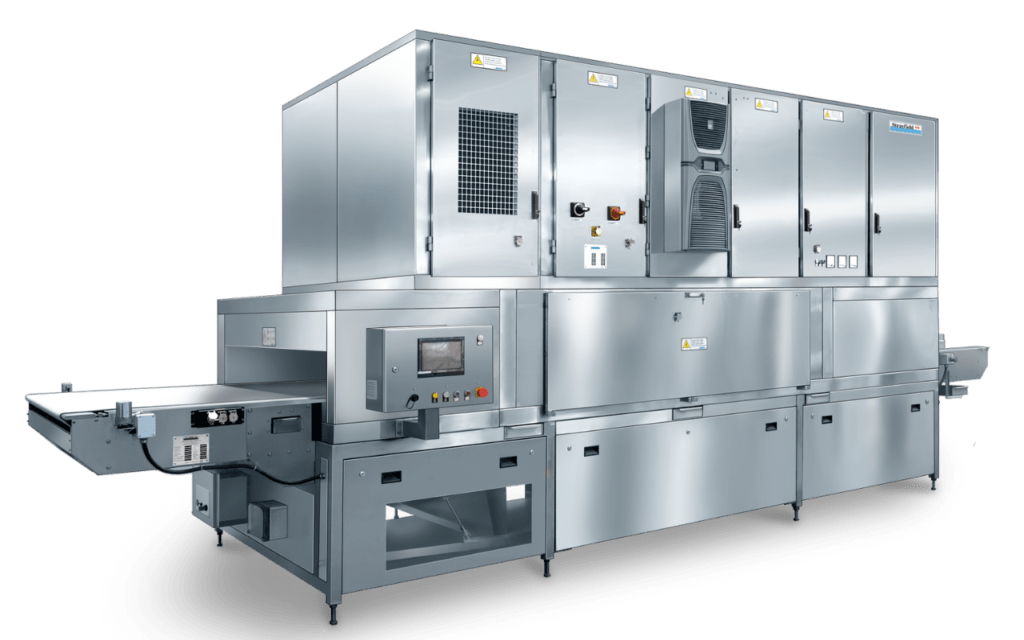Radio Frequency heating or RF heating is one of the most promising technologies for food processing and safety. It has been found to be a faster, more environmentally friendly, and chemical-free way to disinfest and disinfect post-harvest produce.
1. How radio frequency is applied in food processing?
RF heating works by exposing the target mass to a constantly oscillating electrical field. This results in the continuous vibration and reorientation of water (and other dipolar) molecules creating heat via friction, thus killing any pests or bacteria that may be present.
The dried food, nuts and post-harvest processing industry currently rely heavily on fumigation and/or chemical treatment, which is time-consuming since it takes days of fumigation to achieve results. These processes may also introduce potentially harmful chemicals directly into human and animal food. Globally, a push for faster, more environmentally friendly, and chemical-free processes has put Radio Frequency heating into the limelight for dis-infestation and disinfection of post-harvest, dry produce.
2. Advantages of radio frequency processing
RF heating being a volumetric heating process (a process that heats up the subject mass evenly across its cross section), heating can uniformly take place deep into materials and thus, heating up large objects evenly and efficiently no longer needs the surface of the material to be at a significantly high temperature because the core temperature no longer depends on the thermal conduction or convective properties of the product. This in turn allows for a more even and lower average temperature across the product, preserving the product’s nutrient value, colour, and flavour.
RF heating is also a non-contact process. So, there is no risk of fire or burns. An added advantage is that RF heating is also cleaner than other methods of heating because it doesn’t produce any pollutants or soot.
3. Future of RF food processing
A report by McKinsey & Co.1 informs that nearly 40% of the losses of post-harvest produce occurs during the storage phase. This is primally due to exposure to pests, temperature variation and moisture. This highlights the importance and scope for improvement in the dis-infestation of food products since even small improvements can have a large impact given the significant contribution to spoilage that can be attributed to storage of food.
The main drawback of RF processing is its cost. RF equipment is expensive, and the process requires trained personnel to operate it; and while the baking industry has for many decades exploited the benefits of RF technology, a wider group of food processors are however, now seriously looking at RF heating as a solution since its advantages far outweigh its costs.
Looking to the future, RF processing is set to revolutionise the food industry. Its speed, safety and energy efficiency make it the perfect solution for large-scale food production. With more and more food producers looking for ways to reduce their costs and environmental impact, RF processing is likely to become the norm. So, if you’re in the food business, it’s time to start investing in RF processing equipment. You’ll be glad you did.
